Hands On with the OPPO Reno 10x Zoom: 6.6-inch OLED with No Notch and Popup Selfie Camera
by Ian Cutress on April 24, 2019 9:45 AM EST- Posted in
- Smartphones
- Snapdragon
- Qualcomm
- Mobile
- 5G
- Oppo
- OPPO Reno
- Zoom

There are two distinct lines of development in the modern high-end smartphone space: the move to full screen devices, and the premium feature that makes a user go ‘wow’. For the new OPPO Reno series of smartphones, it succeeds on both fronts: it has a no-notch front display, and in order to provide that selfie camera, it has a motorized pop-up camera that comes out of the top. The question is if it is enough to draw users into buying the smartphone.
Please note that the device we are having the hands on with today is a pre-production Chinese variant, with non-final software. OPPO will be sending us updated international versions with updated software soon.
The Economics of Selling Smartphones
For a big portion of users, smartphone sales are either based on brand, or hands on time at the store. If you are sold on a particular brand, it doesn’t matter what the experience is, but if you go into the store, especially a carrier store or a big retailer with designated sections, chances are that an employee will come up to you and tell you about the device they are trying to sell. That employee has, at an estimate, 30-60 seconds to wow the customer with the most premium feature, for that first impression. Out of the two hundred different features a modern smartphone has, choosing that feature is going to be a key metric of how well the device can grab the attention of its users.
In the past those features have included fingerprint scanners, augmented reality, more cameras, even more cameras, speakers, time-of-flight sensors, AI photography, a keyboard, or almost anything else. For the new OPPO Reno series of smartphones, that immediate feature to get the customer talking is the 6.6-inch full screen OLED display paired with the pop-up selfie camera. There’s also a 6x/10x zoom camera too.
The OPPO Reno 10x Zoom
We’ve seen pop-up cameras before, either a square rising out of the device such as with the Vivo NEX, or something that completely slides like the OPPO Find X, or slides and rotates, like the recently announced Samsung A80. OPPO’s solution is somewhat similar to the Vivo NEX design, except that a larger part of the device rises out of the camera in what has been dubbed a ‘shark fin’, or a ‘pizza slice’. The larger implementation allows the slice to have LED flash lights front and rear, but also integrates the top speaker grille which can communicate through a tiny hole in the top when the camera is not in use. This enables the full screen display to essentially become the rest of the phone.
The selfie camera in the pop-up module is going to be slightly limited compared to other notched camera designs, just because the z-height of the slice is a lot smaller than if it was directly integrated into the phone. The camera is a 16MP f/2.0 unit which has a software pipeline through the camera’s Portrait Mode. OPPO states that it rises 11 degrees in 0.8 seconds, and has survived a 200,000 drop test. The device will automatically close the slice if it detects the phone is being dropped – something we confirmed by throwing it up in the air and letting it land on a bed.
For the main cameras, the unit has a rear facing 6x optical / 10x hybrid zoom camera on the rear. The technology is similar to the P30 Pro periscope design we saw only a few weeks ago, relying on a prism to direct the light through more lenses to a vertically oriented sensor. OPPO’s implementation provides the camera with a 6x optical zoom, up to a 10x hybrid zoom (using software to enhance the image), or we can back out all the way to a wide angle lens.
When we have enough light, the zoom function works pretty well. Our unit tested was a pre-production model with non-final software, and the auto-focus at 10x hybrid zoom wasn’t completely accurate, but we assume that will be fixed in due course.
The full camera layout for the OPPO Reno 10x Zoom consists of a 48MP f/1.7 Sony IMX586 main sensor, with a 13MP f/3.0 telephoto sensor and an 8MP 120-degree wide angle sensor. Both the main camera and the telephoto camera are equipped with OIS. It is pretty noticeable when the device switches between the sensors when using the camera app, so keep that in mind when zooming in video. The device allows for 4K60 filming.
The camera also supports a Night Mode feature, although in some quick testing I saw a slight increase in sharpness but not a lot different. The effect was comparable to the Honor View20 I’ve been using recently.
Reno (above), View20 (below)
Outside of the cameras, the display is the main talking point. The 6.6-inch OLED display has a resolution of 2340x1080, and uses Gorilla Glass 6 on the front, for a 93.1% screen to body ratio, one of the highest in the industry. OPPO hasn’t rated the screen for brightness according to its marketing materials, but I will say one thing – it can get very bright. When this unit is at full brightness, I’m sure it could navigate ships into harbour. Perhaps appropriately, putting it at full brightness shows up a warning that says ‘high power consumption’. No kidding. The materials state that it is calibrated to DCI-P3, but doesn’t state to what extent.
If there’s a desire to be the ultimate pedant, then yes, some of the bezels are noticeable at the top corners and the bottom chin. As with a lot of similar devices that go down this route, in order to get a speaker grille at the top of the device there is a slight raising up of the screen from the main body. It’s usually imperceptible to notice, but in using devices like this and the Honor View 20, you either end up seeing this very small lip as part of the design, or something you rub your finger against repeatedly in frustration. Curved displays might have to be a requirement here to get around this.
Usually a large bright display plays havoc on the battery life. I haven’t had the unit long enough to test what it is like, but OPPO lists the battery capacity here at 4065 mAh, which is easily respectable for a flagship smartphone, and supports OPPO’s VOOC 3 charging technology. The device is paired with 8 GB of memory and 256 GB of storage (UFS 2.1?), with no scaled down versions in this configuration. The SoC at the heart is the Snapdragon 855.
The device uses Goodix’s in-screen fingerprint sensor, which is currently present in 40 different smartphones in the market. This optical sensor is likely going to be Goodix’s second or third generation unit, with OPPO claiming a 20-30% more accurate unlocking procedure that also runs almost 30% faster.
One other element to OPPO’s launch is its gaming technology. OPPO states that the unit uses a copper heatpipe and thermal grease under the hood, as well as graphite sheets for other hot chips. This is all designed to help boost the device’s thermal performance, which comes paired with two software tools: Frameboost and TouchBoost. Between the two, they detect when a game doesn’t have enough resources due to in-memory apps, and closes them as needed – the marketing term for this is ‘reallocating resources’. When we get a unit under full test, we’ll see how this turns out. OPPO also has a Game Shock feature, which uses the built in horizontal linear motor for vibrational feedback.
The biggest loser in the push to full screen devices is the audio, and actually OPPO does a reasonable job here – the whole screen acts as a speaker. This gives it good volume, however it does get a little distorted on the high-end. I tend to watch videos while doing the washing up, so having something that can be heard over running water is always beneficial.
The device is running Android Pie, albeit a customized version of it called ColorOS 6 that has additional OPPO related features. The device will also be available in two colors: Ocean Green and Jet Black.
My overall impression with the phone is that it does have a lot of wow factor – bearing in mind I’ve had it for about twelve hours so far. My personal requirements for a telephoto/zoom device makes the OPPO Reno 10x Zoom a high contender, along with that large OLED screen, and hopefully a good battery life. To be honest, I could perhaps do without the selfie camera – I don’t take a lot of them, but not having a selfie camera on a 2019 smartphone is suicide, and the solutions beyond a pop-up camera seem few and far between. The way OPPO has implemented it on the Reno is perhaps one of the best of the bunch, as the others can have obvious problems.
After a half-day, OPPO gets a thumbs up from me. This pre-production device still needs a few updates, and I look forward to some more long term testing.
Along with the OPPO Reno 10x Zoom announcement for western markets today, OPPO also launched a Snapdragon 710-based OPPO Reno without the 10x Zoom, and a 5G version to come later this year.



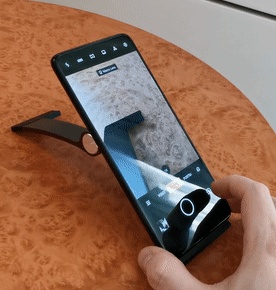
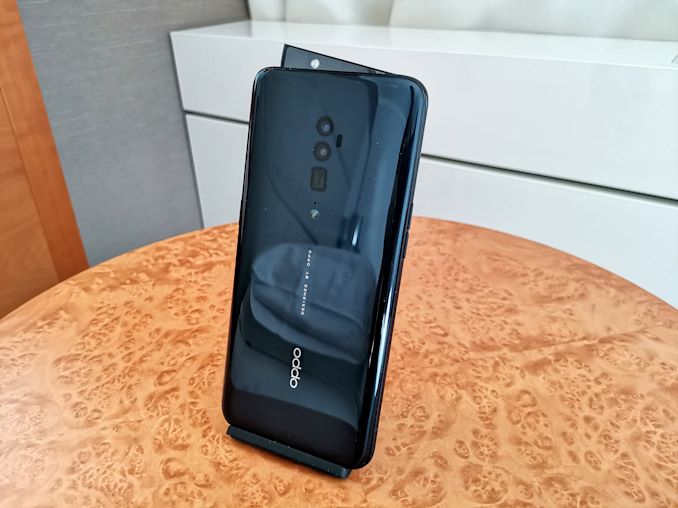

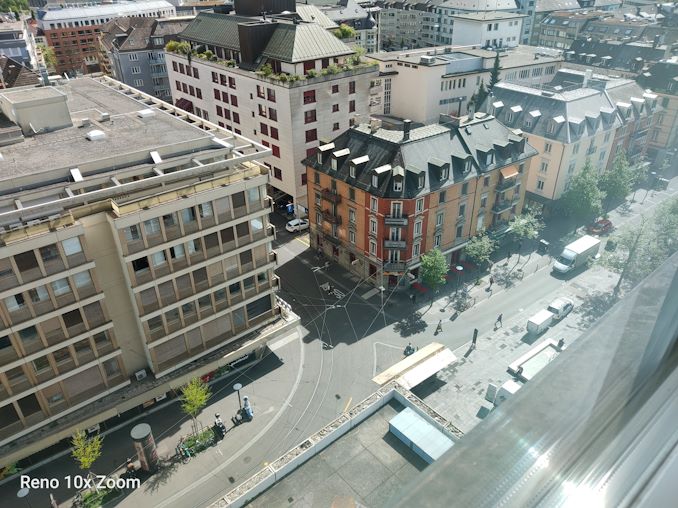
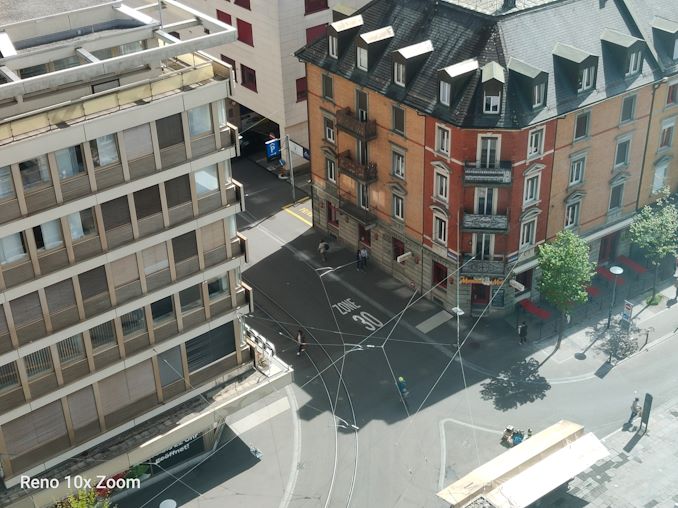
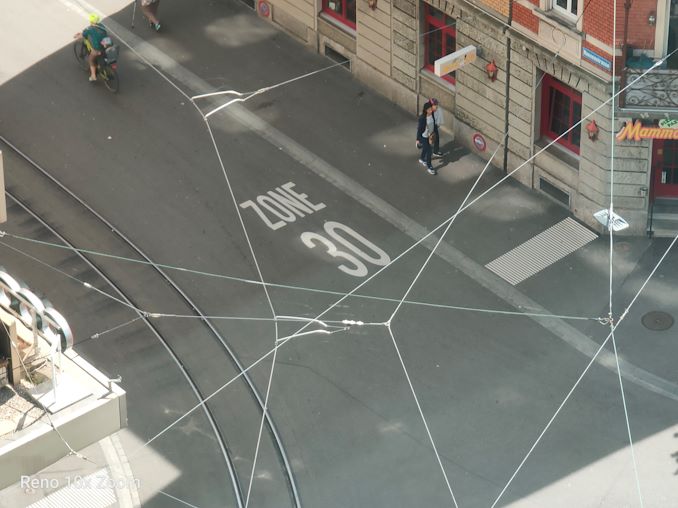

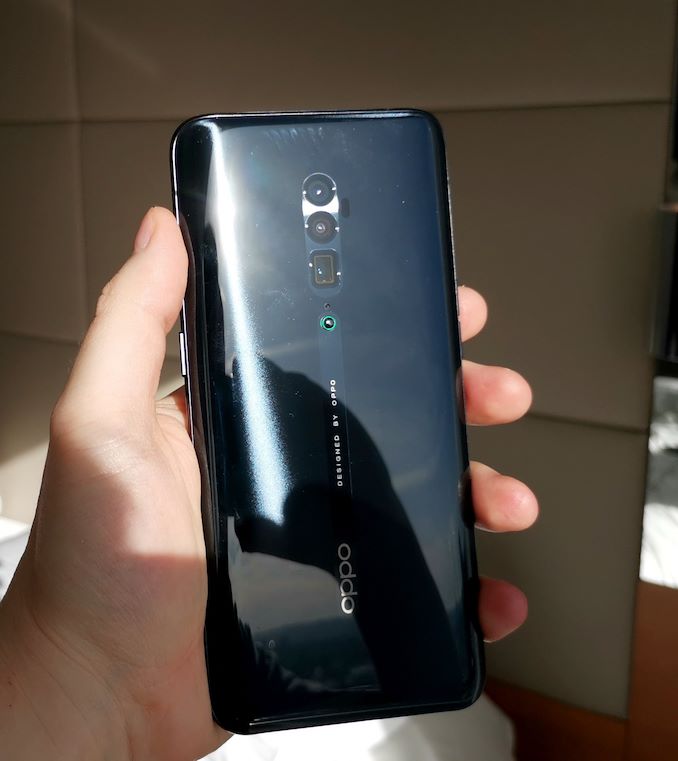
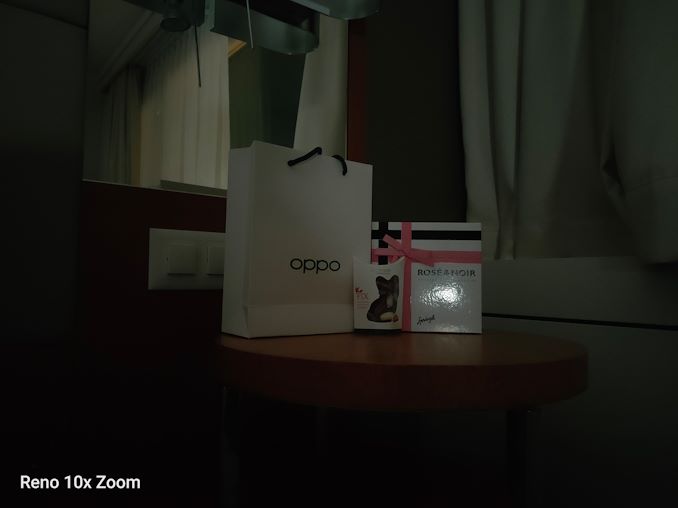
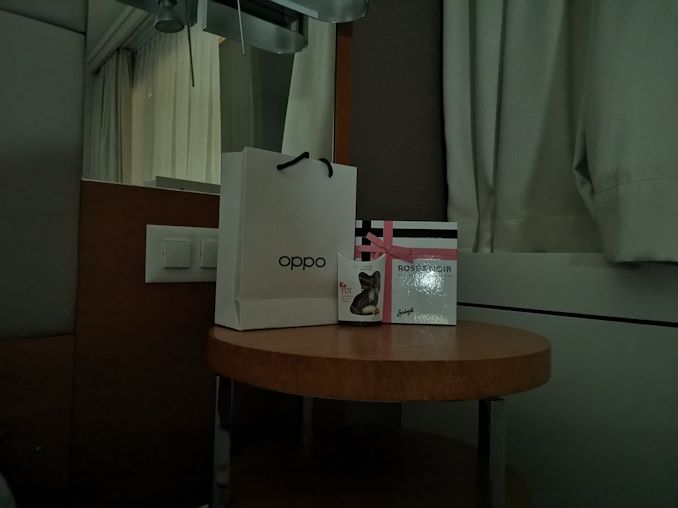
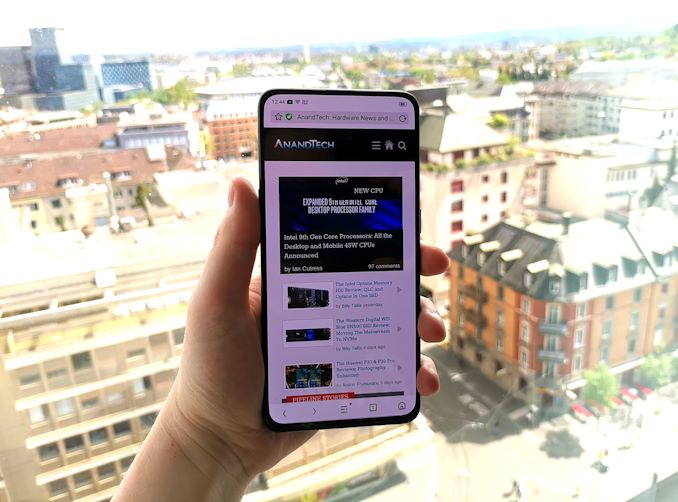
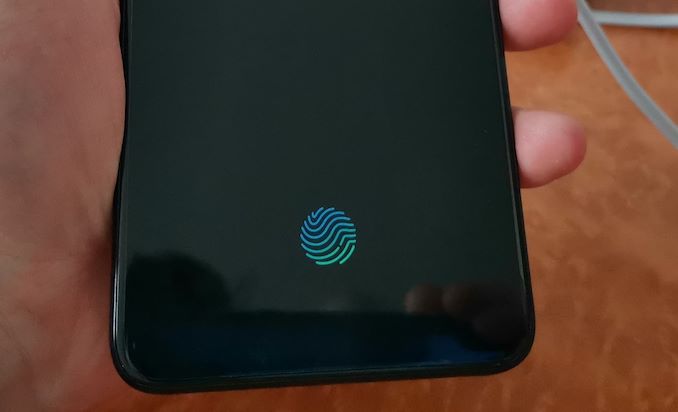
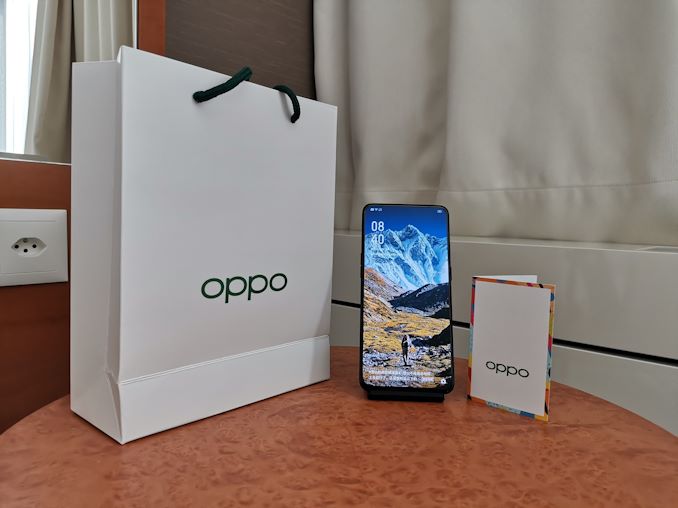








56 Comments
View All Comments
macroboy - Wednesday, April 24, 2019 - link
Wow. This looks like a great device, i'd like to see some tech specs though and that selfie camera is a bit weird lol. Wonder what the launch price will be...macroboy - Wednesday, April 24, 2019 - link
whoops I comepletley missed that oofnathanddrews - Thursday, April 25, 2019 - link
They announced pricing at the Zurich event. AT covered it in the live blog.Oppo Reno: 6GB+128GB – 499 euros (6GB+256GB and 8GB+256GB TBD)
Oppo Reno 10x Zoom: 8GB+256GB – 799 euros
Oppo Reno 10x Zoom 5G: 8GB+256GB – 899 euros
xxsns - Tuesday, May 7, 2019 - link
In China Market, their well be more cheaper.OPPO Reno:
6G + 128GB = ¥2999.00 ≈ €396.2528
6G + 256GB = ¥3299.00 ≈ €435.8913
8G + 256GB = ¥3599.00 ≈ €475.5298
OPPO Reno 10x Zoom:
6G + 128GB = ¥3999.00 ≈ €528.3812
6G + 256GB = ¥4499.00 ≈ €594.4453
8G + 256GB = ¥4799.00 ≈ €634.0838
Kamus - Wednesday, April 24, 2019 - link
Why do all reviewers refer to the front camera, as "the selfie camera"?I never take selfies, but I use my camera all the time to video call my kid. Not being able to take selfies I wouldn't miss one bit, but no video calls? That would be a deal breaker to me.
Are all reviewers single?
Xex360 - Wednesday, April 24, 2019 - link
Can't agree more. People are becoming increasingly narcissistic these days.heffeque - Wednesday, April 24, 2019 - link
You people complain about the darndest things."Selfie camera" is easily understandable and shorter than "video call camera", and "front" camera can sometimes lead to confusion: Is it the camera pointing to the front, or is it the one on the front pointing back? (yes, people do confuse the front and back terminology).
Calling it "selfie camera" isn't the end of the world. Please be adults about it.
imaheadcase - Wednesday, April 24, 2019 - link
Um when has anyone ever got confused with "front" of a camera on a phone. lolThe irony with what you say is "selfie camera" is literally something a adult would not say, and tell us to be adults about it. I've never talking with people about phones referred to it as that.
Calling it a selfie camera is like a average person calling every phone a iphone.
serpretetsky - Wednesday, April 24, 2019 - link
It's not clear to me which one is the front camera. Selfie camera is very obvious to me. I do not take selfies.chaos215bar2 - Wednesday, April 24, 2019 - link
If we're really going to be pedantic about it, isn't a video call using the front camera, strictly speaking, a live selfie? (Unless you're holding your phone up to someone else's face, of course.)